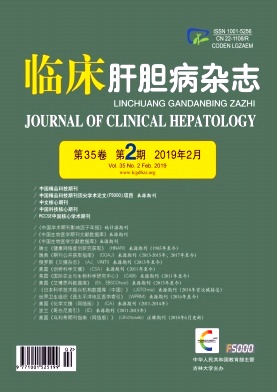|
[1]SUN H, GONG S, CARMODY RJ, et al.TIPE2, a negative regulator of innate and adaptive immunity that maintains immune homeostasis[J].Cell, 2008, 133 (3) :415-426.
|
|
[2]KONG L, LIU K, ZHANG YZ, et al.Downregulation of TIPE2mRNA expression in peripheral blood mononuclear cells from patients with chronic hepatitis C[J].Hepatol Int, 2013, 7 (3) :844-849.
|
|
[3]SAKAGUCHI S, SAKAGUCHI N, ASANO M, et al.Immunologic self-tolerance maintained by activated T cells expressing IL-2 receptor alpha-chains (CD25) .Breakdown of a single mechanism of self-tolerance causes various autoimmune diseases[J].J Immunol, 1995, 155 (3) :1151-1164.
|
|
[4]NAFADY A, NAFADY-HEGO H, ABDEWAHAB NM, et al.Peripheral lymphocytes analyses in children with chronic hepatitis Cvirus infection[J].Eur J Clin Invest, 2018, 48 (10) :e13004.
|
|
[5]EBINUMA H, NAKAMOTO N, LI Y, et al.Identification and in vitro expansion of functional antigen-specific CD25+Fox P3+regulatory T cells in hepatitis C virus infection[J].J Virol, 2008, 82 (10) :5043-5053.
|
|
[6]ZHAI N, LI H, SONG H, et al.Hepatitis C virus induces MD-SCs-like monocytes through TLR2/PI3K/AKT/STAT3 signaling[J].PLo S One, 2017, 12 (1) :e0170516.
|
|
[7]LUAN YY, YAO YM, ZHANG L, et al.Expression of tumor necrosis factor-αinduced protein 8 like-2 contributes to the immunosuppressive property of CD4+CD25+regulatory T cells in mice[J].Mol Immunol, 2011, 49 (1-2) :219-226.
|
|
[8]ZHANG L, SHI Y, WANG Y, et al.The unique expression profile of human TIPE2 suggests new functions beyond its role in immune regulation[J].Mol Immunol, 2011, 48 (9-10) :1209-1215.
|
|
[9]FONTENOT JD, GAVIN MA, RUDENSKY AY.Foxp3 programs the development and function of CD4+CD25+regulatory Tcells[J].Nat Immunol, 2003, 4 (4) :330-336.
|
|
[10]RUDENSKY AY.Regulatory T cells and Foxp3[J].Immunol Rev, 2011, 241 (1) :260-268.
|
|
[11]PASSERINI L, BACCHETTA R.Forkhead-box-P3 gene transfer in human CD4+T conventional cells for the generation of stable and efficient regulatory T Cells, suitable for immune modulatory therapy[J].Front Immunol, 2017, 8:1282.
|
|
[12]KITAGAWA Y, SAKAGUCHI S.Molecular control of regulatory T cell development and function[J].Curr Opin Immunol, 2017, 49:64-70.
|
|
[13]SMYK-PEARSON S, GOLDEN-MASON L, KLARQUIST J, et al.Functional suppression by FoxP3+CD4+CD25high regulatory T cells during acute hepatitis C virus infection[J].J Infect Dis, 2008, 197 (1) :46-57.
|
|
[14]GUO FB, WU JZ, AI LM, et al.Clinical significance of Th17/Treg and associated cytokines in peripheral blood in chronic hepatitis C patients with liver cirrhosis[J].J Clin Hepatol, 2017, 33 (3) :479-484. (in Chinese) 郭飞波, 武军驻, 艾黎明, 等.慢性丙型肝炎肝硬化患者外周血辅助性T淋巴细胞17/调节性T淋巴细胞及相关因子检测的临床意义[J].临床肝胆病杂志, 2017, 33 (3) :479-484.
|
|
[15]CLAASSEN MA, de KNEGT RJ, TILANUS HW, et al.Abundant numbers of regulatory T cells localize to the liver of chronic hepatitis C infected patients and limit the extent of fibrosis[J].J Hepatol, 2010, 52 (3) :315-321.
|
|
[16]ISHIBASHI M, YAMAGUCHI H, HIROTANI Y, et al.Contradictory intrahepatic immune responses activated in high-load hepatitis C virus livers compared with low-load livers[J].Arch Virol, 2018, 163 (4) :855-865.
|
|
[17]AMORAS EDA S, GOMES ST, FREITAS FB, et al.Intrahepatic mRNA expression of FAS, FASL, and FOXP3 genes is associated with the pathophysiology of chronic HCV infection[J].PLo S One, 2016, 11 (5) :e0156604.
|
|
[18]JIANG YY, ZHANG XH, ZHENG SJ.Change in immune status after antiviral therapy in patients with hepatitis C virus infection[J].J Clin Hepatol, 2018, 34 (2) :403-406. (in Chinese) 蒋莹莹, 张晓慧, 郑素军.HCV感染者抗病毒治疗前后免疫状态的变化[J].临床肝胆病杂志, 2018, 34 (2) :403-406.
|
|
[19]SHEVACH EM, DIPAOLO RA, ANDERSSON J, et al.The lifestyle of naturally occurring CD4+CD25+Foxp3+regulatory Tcells[J].Immunol Rev, 2006, 212:60-73.
|
|
[20]READ S, GREENWALD R, IZCUE A, et al.Blockade of CTLA-4on CD4+CD25+regulatory T cells abrogates their function in vivo[J].J Immunol, 2006, 177 (7) :4376-4383.
|
|
[21]LI BT, XIAO L.Research progress of the relationship between CTLA-4, CTLA-4 polymorphism and HCV infection[J/CD].Chin J Clinicians:Electronic Edition, 2013, 7 (23) :10905-10908. (in Chinese) 李邦涛, 肖丽.细胞毒性T淋巴细胞相关抗原4及其基因多态性在丙型病毒性肝炎中的研究进展[J/CD].中华临床医师杂志:电子版, 2013, 7 (23) :10905-10908.
|
|
[22]DOUMBA PP, SERTI E, BOUTSIKOU M, et al.Phenotypic and functional alterations of primary human PBMCs induced by HCV non-enveloped capsid-like particles uptake[J].Cell Mol Life Sci, 2013, 70 (18) :3463-3474.
|
|
[23]DING J, SU J, ZHANG L, et al.Crocetin activates Foxp3through TIPE2 in asthma-associated Treg cells[J].Cell Physiol Biochem, 2015, 37 (6) :2425-2433.
|
|
[24]FAN T, HUANG X, LIU C, et al.Egress of murine regulatory Tcells from the thymus requires TIPE2[J].Biochem Biophys Res Commun, 2018, 500 (2) :376-383.
|














 DownLoad:
DownLoad: